This is a preprint.
Is it safe to lift COVID-19 travel bans? The Newfoundland story
- PMID: 32766595
- PMCID: PMC7402047
- DOI: 10.1101/2020.07.16.20155614
Is it safe to lift COVID-19 travel bans? The Newfoundland story
Update in
-
Is it safe to lift COVID-19 travel bans? The Newfoundland story.Comput Mech. 2020;66(5):1081-1092. doi: 10.1007/s00466-020-01899-x. Epub 2020 Aug 29. Comput Mech. 2020. PMID: 32904431 Free PMC article.
Abstract
A key strategy to prevent a local outbreak during the COVID-19 pandemic is to restrict incoming travel. Once a region has successfully contained the disease, it becomes critical to decide when and how to reopen the borders. Here we explore the impact of border reopening for the example of Newfoundland and Labrador, a Canadian province that has enjoyed no new cases since late April, 2020. We combine a network epidemiology model with machine learning to infer parameters and predict the COVID-19 dynamics upon partial and total airport reopening, with perfect and imperfect quarantine conditions. Our study suggests that upon full reopening, every other day, a new COVID-19 case would enter the province. Under the current conditions, banning air travel from outside Canada is more efficient in managing the pandemic than fully reopening and quarantining 95% of the incoming population. Our study provides quantitative insights of the efficacy of travel restrictions and can inform political decision making in the controversy of reopening.
Conflict of interest statement
Conflict of interest
The authors declare that they have no conflict of interest.
Figures

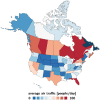
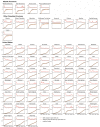
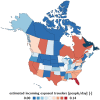
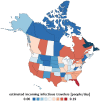
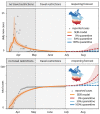



References
-
- Alber M., Buganza Tepole A., Cannon W., De S., Dura-Bernal S., Garikipati K., Karniadakis G., Lytton W.W., Perdikaris P., Petzold L., Kuhl E.. Integrating machine learning and multiscale modeling: Perspectives, challenges, and opportunities in the biological, biomedical, and behavioral sciences. npj Digital Medicine 2 (2019) 115. - PMC - PubMed
-
- Canadian Cancer Statistics Advisory Committee 2019. Canadian Cancer Statistics 2019. Toronto, ON: Canadian Cancer Society; 2019. https://cancer.ca/Canadian-Cancer-Statistics-2019-EN accessed: July 9, 2020.
-
- Cobey S.. Modeling infectious disease dynamics. Science (2020) doi:20.1126/science.aba5659. - PubMed
Publication types
Grants and funding
LinkOut - more resources
Full Text Sources
Miscellaneous
